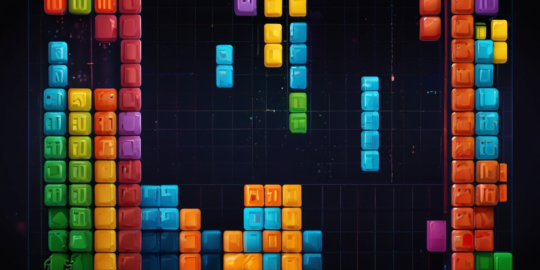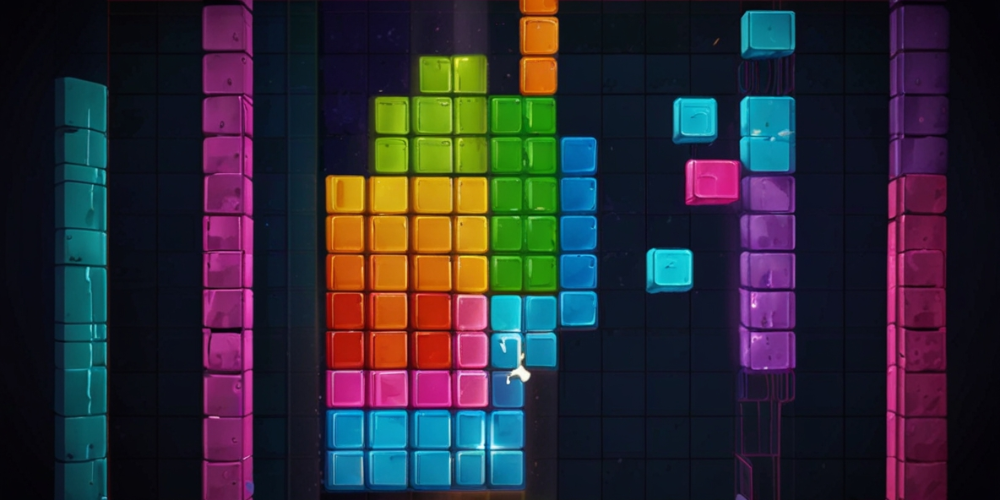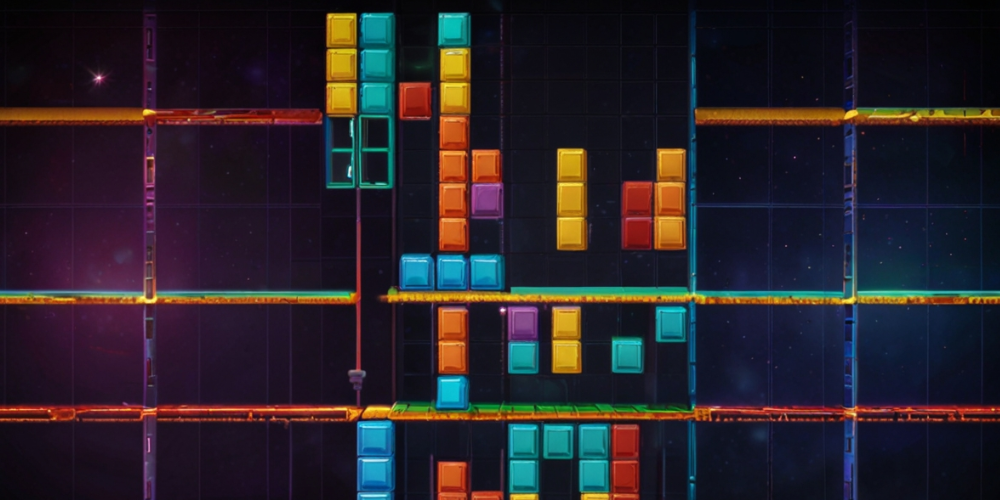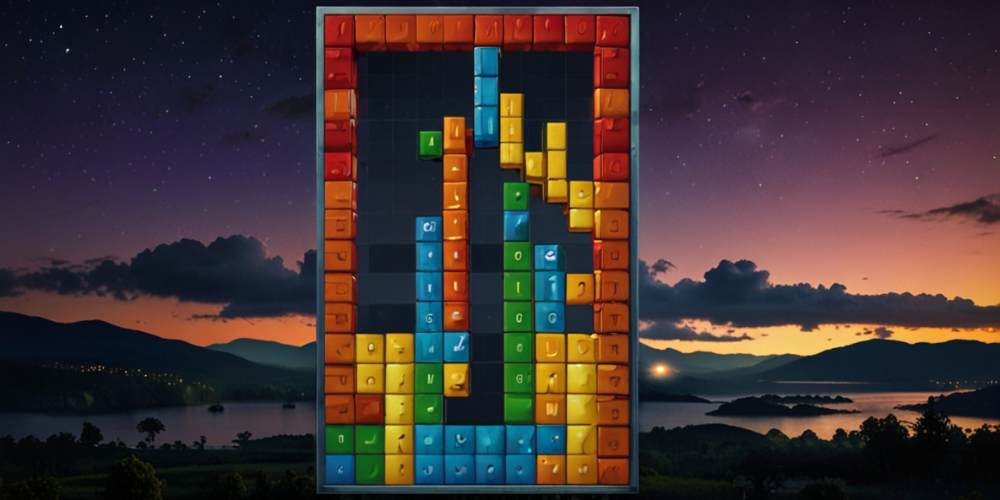
It was just another rainy afternoon, and I found myself wandering into a small café during my college years. As I sipped on my caramel latte, my eyes caught a flicker of movement on an old Game Boy lying on the table next to me. A colorful block fell from the top of the screen down to the bottom, snapping into place with a satisfying click. I was mesmerized. That moment marked the beginning of a profound and transformative relationship with Tetris.
The Allure of Simplicity
At first glance, Tetris is deceptively simple. The concept involves stacking falling Tetriminos—shapes made of four connected blocks—into a complete line. When I first played, I was struck by how fundamental the gameplay was, yet how engaging and challenging it could become as the speed increased. This paradox of simplicity opened up a complex world that I wanted to explore more. I spent hours lost in this digital dance, reveling in the satisfaction of a perfectly placed piece.
From the Soviet Union to the World
Developed by Russian computer scientist Alexey Pajitnov in 1984, Tetris emerged at a time when computing was still in its infancy. Initially created on a Soviet computer, it was a pure labor of love—a way to test software. Yet, as I learned its history, I realized how this humble beginning catalyzed an international frenzy. The game spread rapidly, morphing with each new platform. The story of Tetris is a tale of cross-cultural connection through a universal language of gaming.
Influencing Gaming Design
Tetris taught me the principles of design that resonate throughout the gaming industry today. The game's level design was particularly compelling. With each level, the speed and complexity increased, elevating the sense of urgency and excitement. I found myself learning about pacing—a crucial element found in countless games that followed. Developers took notes, and soon, the principles of Tetris began influencing everything from platformers to puzzle games.

The Birth of Mobile Gaming
As I transitioned into the era of mobile gaming, Tetris was right there with me. The release of Tetris on mobile phones in the early 2000s was a game-changer, literally. It introduced a new way to play—anywhere and anytime. I experienced this firsthand while commuting on bumpy buses and waiting in long lines. The ability to stack blocks during idle moments was nothing short of revolutionary. It set the stage for a new gaming ecosystem where convenience became king.
A Canvas for Competition
Tetris also transformed into a platform for competitive gaming. The introduction of competitive Tetris tournaments revealed a new depth to the game I hadn’t previously considered. The rush of matching wits with skilled players was an exhilarating experience. As I competed, I began to appreciate strategies like 'T-spins' and back-to-back Tetris lines. This layer of competitive play didn't just add complexity; it forged a community of players who were passionate and dedicated.
Cultural Impact and Enduring Popularity
Over the years, Tetris ingrained itself deeply within popular culture. I noticed it being referenced in films, television, and even fashion. The iconic music piece, "Korobeiniki," became an anthem as recognizable as its gameplay. It was fascinating to witness how this pixelated puzzle had transcended its origins, finding itself within various cultural contexts, often used to symbolize problem-solving and efficiency.

Embracing Modernity with New Versions
As technology evolved, so too did Tetris. The introduction of 3D variations, augmented reality experiences, and online multiplayer modes offered fresh interpretations of my beloved classic. Tetris Effect, for instance, blew my mind with its mesmerizing visuals combined with immersive soundscapes. This reimagining reignited my love and allowed me to experience nostalgia in a profoundly modern context, proving that reinvention is the spice of life.
The Psychological Appeal of Tetris
Tetris isn't merely about stacking blocks; it's about cognitive challenge and mental exercise. Research has revealed that playing Tetris can improve spatial awareness—a skill vital in fields ranging from engineering to architecture. I often found myself zoning out, entranced by the rhythmic dropping of blocks. It was like meditation, allowing me to escape from the stresses of everyday life while sharpening my mind.
Connecting Generations through Gameplay
Through Tetris, I’ve witnessed generations connect over a shared experience. My parents, who played it on their old computers, shared stories of their victories and frustrations. I enjoyed teaching my younger siblings how to play on my smartphone, reviving memories of my own initiation into this addictive puzzle game. Tetris showcases a unique quality of timelessness—a bridge connecting past and present gamers.
Community and Online Connectivity
In the age of the internet, Tetris fostered online communities where players could share strategies, compete, and support one another. Social media was instrumental in this transformation. I spent hours browsing forums, discovering tips for improving my game and participating in discussions around competitive strategies. This digital camaraderie enriched my experience, creating lasting relationships with fellow enthusiasts around the globe.
Embracing Inclusivity
Tetris is one of the most inclusive video games; anyone can pick up and play it. The mechanics are straightforward, and players of all ages can participate. I cherished seeing children, teenagers, adults, and seniors alike enjoying this game together. The accessibility of Tetris invites an environment where skill is developed, not determined by age or background, allowing everyone to join the experience.

The Future of Tetris
As I gaze into the future, I can envision the unwavering presence of Tetris in the gaming landscape. The constant adaptation to new technologies suggests that the game will continue to thrive. With virtual reality on the rise and new gaming platforms emerging, I am excited to see how the game evolves. Will we see Tetris in immersive, three-dimensional spaces? Only time will tell, but its legacy is likely to persist, evolving alongside new generations of players.
A Personal Legacy
Tetris holds a personal place in my life, embodying countless hours of entertainment, growth, and connection. It has shaped not only my gaming preferences but also my approach toward problem-solving and creativity. The simple act of aligning shapes has renewed my appreciation for puzzles and challenges both in-game and out in the real world. Tetris has left a mark, a guiding influence that extends far beyond its pixels.
Final Notes on Learning and Growth
The journey with Tetris continues to remind me of the importance of perseverance and strategy. Each game is an exercise in focus, timing, and flexibility—qualities that resonate deeply in personal and professional areas of life. I find joy in the knowledge that as I stack blocks and clear lines, I am also reinforcing my skills to tackle the myriad puzzles of daily existence.